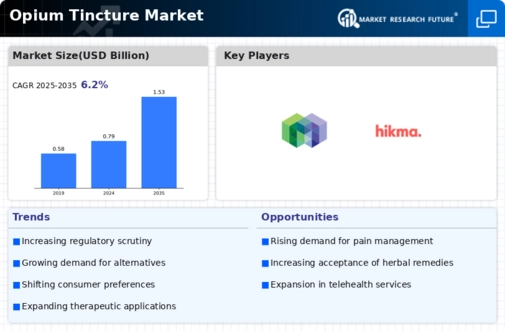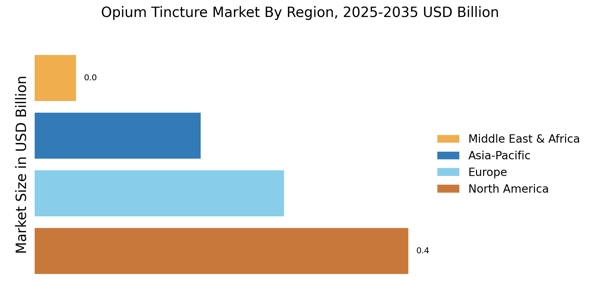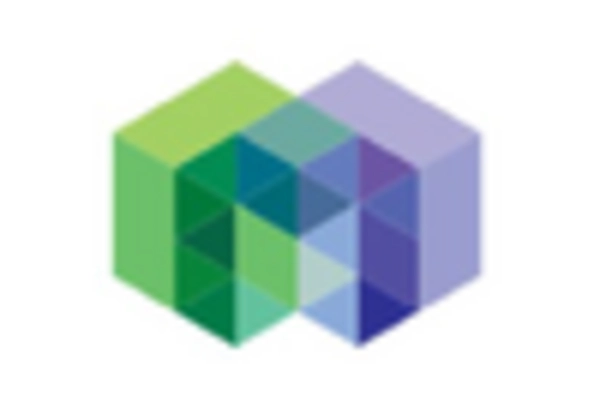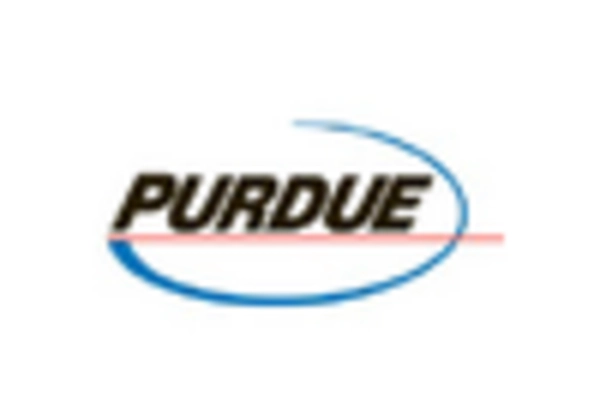Shift Towards Natural Remedies
There is a discernible shift towards natural remedies within the Opium Tincture Market, as consumers increasingly seek alternatives to synthetic pharmaceuticals. This trend is driven by a growing awareness of the potential side effects associated with conventional medications. Research indicates that a significant portion of the population is now inclined to explore herbal and natural solutions for health issues, including pain management. The Opium Tincture Market stands to benefit from this movement, as opium tincture is derived from natural sources and is perceived as a more holistic approach to treatment. This inclination towards natural remedies may lead to an increase in market penetration and consumer acceptance of opium tincture products.
Advancements in Pharmaceutical Research
Advancements in pharmaceutical research are playing a crucial role in shaping the Opium Tincture Market. Ongoing studies are exploring the pharmacological properties of opium tincture, leading to a better understanding of its therapeutic applications. This research is essential for developing new formulations and delivery methods that enhance the efficacy and safety of opium tincture products. As the scientific community continues to investigate the potential benefits of opium tincture, the Opium Tincture Market is likely to see increased investment in research and development. This focus on innovation may result in a broader range of products that cater to diverse patient needs, ultimately driving market growth.
Regulatory Changes Favoring Medical Use
Recent regulatory changes are positively impacting the Opium Tincture Market, as governments and health authorities are increasingly recognizing the medicinal benefits of opium tincture. In several regions, there has been a shift towards more lenient regulations surrounding the medical use of opiates, which includes opium tincture. This regulatory environment is conducive to research and development initiatives aimed at exploring the therapeutic potential of opium tincture for various medical conditions. As a result, the Opium Tincture Market is likely to witness an influx of new products and formulations, catering to the evolving needs of healthcare providers and patients alike.
Rising Incidence of Opioid-Related Disorders
The Opium Tincture Market is also influenced by the rising incidence of opioid-related disorders, which has prompted a reevaluation of pain management strategies. As the opioid crisis continues to unfold, there is a growing emphasis on finding safer alternatives for pain relief. Opium tincture, when used responsibly and under medical supervision, may offer a solution that balances efficacy with safety. This situation presents an opportunity for the Opium Tincture Market to position itself as a responsible alternative within the broader context of pain management, potentially attracting both healthcare providers and patients seeking effective yet safer options.
Increasing Demand for Pain Management Solutions
The Opium Tincture Market is experiencing a notable surge in demand for effective pain management solutions. As chronic pain conditions become more prevalent, healthcare providers are increasingly turning to opium tincture as a viable option for patients seeking relief. According to recent data, the prevalence of chronic pain affects approximately 20% of adults, leading to a growing interest in alternative therapies. This trend is further supported by the rising awareness of the limitations of conventional pain medications, which often come with significant side effects. Consequently, the Opium Tincture Market is likely to expand as more patients and healthcare professionals recognize the potential benefits of opium tincture in managing pain effectively.


















Leave a Comment